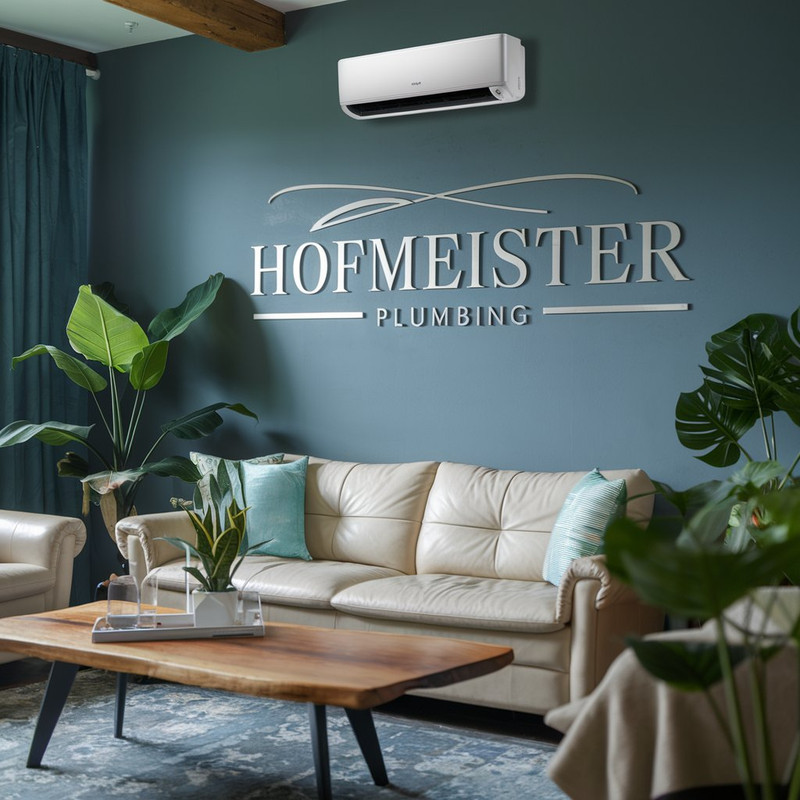When New Jersey's summer heat bears down, finding ways to stay cool without overspending becomes a quest. Imagine the perfect combination of ceiling fans and air conditioning working in harmony. By setting your thermostat a bit higher and letting ceiling fans swirl the air around, you can enjoy a comfortable oasis while keeping those energy bills in check. Curious about the art of staying cool and efficient? There's a whole world of tips and tricks to explore for a breezy summer experience!
Key Takeaways
- Imagine feeling a gentle breeze on a hot summer day, even when you're indoors. That's the magic of ceiling fans! They create a delightful wind chill effect, making rooms feel cooler without actually lowering the temperature. This means you can set your thermostat a bit higher and still feel perfectly comfortable.Combining the power of ceiling fans with air conditioning is like having a secret weapon against high electricity bills. By working together, they help reduce energy consumption, keeping your wallet happy.A little tip for the summer: Set your ceiling fans to spin counterclockwise. This simple adjustment enhances the cooling effect when paired with air conditioning, making your home feel like a cool oasis.And here's a clever trick: Bump up your thermostat by 2-4 degrees when your fans are on. You'll maintain a comfortable environment while sneaking in some energy savings.For those who love efficiency, energy-efficient DC motor fans are a dream come true. They provide optimal airflow with minimal energy use, making them the perfect partners for your air conditioning system.
Maximizing Energy Efficiency With Ceiling Fans
To truly harness energy efficiency through ceiling fans, it's crucial to grasp their power dynamics.
Typically, ceiling fans consume between 50 to 100 watts, yet high-efficiency models impressively sip only 16 to 42 watts.
Imagine this: operating a fan costs merely 5 to 20 cents daily—substantially less than many other cooling methods.
By generating a refreshing wind chill, fans can make a room feel up to 4°F cooler. This effect allows you to comfortably increase the thermostat by 2 to 4 degrees, paving the way for meaningful energy savings.

Fans equipped with DC motors are particularly noteworthy, offering superb efficiency by using less wattage while maintaining optimal airflow.
Embracing such innovations is a smart move for those keen on conserving energy. Additionally, modern fans may include energy-saving LED light kits to further enhance their efficiency.
Optimal Placement and Installation Tips
For the ultimate ceiling fan experience, mastering the art of placement and installation is essential. Picture this: fan blades gracefully spinning at least 7 feet above the floor, ensuring no accidental head bumps, while maintaining a cozy 18-inch distance from the walls. By centering the fan, you create a delightful breeze that dances evenly across the room. In grander spaces, imagine the harmony of multiple fans working together to mesmerize you with their cooling magic.
Now, for those majestic high ceilings, envision using downrods to bring the fan to the perfect height, where its breeze can be felt and appreciated. Before embarking on this installation adventure, remember to switch off the power at the breaker box and gather your trusty tools, including screwdrivers, pliers, and a voltage tester. For a room size of 225–400 sq. ft., consider using a 50–54 inch fan to achieve effective air circulation.
As you mount the fan, imagine it securely anchored, preventing any unwanted vibrations that could disrupt your tranquility. Keep the manufacturer's instructions close, like a treasure map guiding you to a flawless setup.
Once installed, test the fan, watching it whirl smoothly through its speed settings. In different rooms, let your creativity flow: position it over beds in bedrooms for a gentle lullaby breeze, center it in living rooms to be the heart of comfort, and let it hover above dining areas in kitchens, directing a focused airflow to enhance every meal.
With these tips in mind, your ceiling fan becomes more than just a fixture; it's the conductor of a symphony of air that elevates your space to new heights of comfort.
Seasonal Operation and Maintenance Guidelines
Mastering the art of ceiling fan placement and installation is only the beginning. The true magic lies in keeping them efficient throughout the changing seasons.
In the sweltering heat of summer, set your fan to spin counterclockwise, creating a refreshing breeze that dances through your home. As the chill of winter sets in, switch the rotation to clockwise, gently pushing warm air downwards to embrace you in cozy comfort. A ceiling fan can help lower indoor temperatures by about four degrees, making it an effective ally in energy savings and comfort.
Spring and autumn offer the perfect opportunity to use your fans for maintaining a pleasant atmosphere without over-relying on heating or cooling.
Maintenance is key to ensuring your fan remains your steadfast companion. Remember to change the fan's direction with the seasons, and give those blades a regular clean to keep them gleaming.
Check the fan's balance to ward off any wobbles that might disrupt your peace. A quick inspection of the electrical components can make all the difference in preventing wear. If your fan has seen better days, consider upgrading to an energy-efficient model that promises to keep your energy bills in check.
Enhancing Indoor Air Quality
To truly breathe easy indoors, it's not just about keeping cool with ceiling fans or air conditioning. Elevating indoor air quality calls for a more thoughtful strategy.

Picture air purifiers with HEPA filters as your personal air guardians, capturing pesky dust particles and mold spores, making each breath feel cleaner and fresher. And there's a touch of futuristic magic with UV-C light sanitization, zapping away harmful microorganisms as if by wizardry. Just make sure to choose purifiers that are ozone-free, so you can enjoy the benefits without any hidden health risks.
Also, don't forget to match the purifier to your room size for maximum efficiency.
Ventilation plays a starring role in the quest for pristine air. Mechanical ventilation systems bring in fresh, filtered air, while whole-house fans bid farewell to the stale, musty stuff. Using exhaust fans in bathrooms and kitchens is crucial for removing moisture and odors, reducing the risk of mold growth, and ensuring adequate air exchange in living spaces.
For those who are energy-savvy, heat or energy recovery ventilators are the way to go—they're like the eco-friendly superheroes of ventilation.
And let's not overlook the power of going natural. By using eco-friendly cleaning products and opting for VOC-free paints, we can keep indoor pollutants at bay.
A regular routine of dusting and vacuuming with HEPA-filtered equipment adds an extra layer of protection, ensuring your indoor air remains as refreshing as a cool breeze on a summer's day.
Achieving Cost Savings and Comfort
In the quest for the perfect balance between cost savings and comfort in New H. Hofmeister & Co. Inc. air conditioning Westwood NJ H. Hofmeister & Co. Inc. Jersey, ceiling fans emerge as unsung heroes. They consume a fraction of the energy compared to air conditioners, leading to noticeable reductions in electricity bills. Simply by tweaking your thermostat 2-4 degrees higher while letting a ceiling fan work its magic, you can unlock even more energy savings. Opting for fans with Energy Star ratings amplifies these savings, as they're approximately 50% more efficient than their standard counterparts. Energy Star-rated ceiling fans are designed with advanced blade and motor features, allowing them to move air 20% more efficiently than conventional models. But the benefits don't stop at savings. Ceiling fans elevate comfort by creating a delightful cooling effect that can make a room feel up to 6 degrees cooler. Their ability to circulate air effectively banishes hot spots and offers the luxury of personalized cooling in individual rooms. Pairing them with air conditioning enhances comfort without sending energy usage into overdrive. Moreover, with designs as varied as your imagination, ceiling fans can seamlessly blend into any room's decor, adding a touch of style to their impressive functionality.
Frequently Asked Questions
Can Ceiling Fans Be Used in Humid NJ Climates?
Absolutely, ceiling fans are a fantastic choice for humid NJ climates! These fans work wonders by circulating air, which helps your body cool down more effectively through enhanced sweat evaporation. Imagine a gentle breeze on a hot, sticky day—that's what a ceiling fan provides indoors. For optimal comfort, consider selecting energy-efficient models that not only help reduce the oppressive feel of humidity but also save on energy costs. Embrace the refreshing feel they bring to your home!
Do Ceiling Fans Affect Allergies in Any Way?
Ceiling fans hold a dual role in the world of allergies. On one hand, they enhance air circulation, preventing allergens from settling and accumulating. On the other hand, those gentle breezes can also stir up dust and pollen, sending them swirling through the air. The secret to harnessing the benefits while minimizing the drawbacks lies in regular cleaning. With a bit of maintenance, you can enjoy the refreshing breeze without the sneeze!
Are Ceiling Fans Suitable for All Room Sizes?
Ceiling fans can be a perfect addition to any room, no matter its size. The key is to select the right fan size for your space: opt for a small fan in cozy corners, a medium-sized fan for bedrooms, a large fan for dining areas, and an extra-large fan for those expansive, open-concept spaces. This way, you'll ensure effective and comfortable cooling tailored to each unique area.
How Do Ceiling Fans Complement Smart Home Systems?
Imagine a ceiling fan that adjusts its speed automatically based on the room's temperature and your preferences. Smart ceiling fans offer just that, blending seamlessly into your home system for unparalleled ease. With support for Wi-Fi and Bluetooth, you can control them using your voice or set up automated schedules, all while maintaining energy efficiency. Say goodbye to constant manual tweaks and hello to a new level of comfort and convenience.
What Are the Noise Levels of Different Ceiling Fan Models?
Ceiling fans typically produce noise levels between 35 and 45 dB(A), creating a gentle hum that often goes unnoticed. Some models, designed with whisper technology, excel in maintaining a serene environment, perfect for those who cherish tranquility. On the other hand, high-speed and industrial ceiling fans can roar to life, reaching noise levels of 60 dB or more, adding an energetic buzz to larger spaces. For those keen on minimizing noise, opting for fans crafted with thicker materials and ensuring a secure mounting can make all the difference.
Conclusion
Howdy folks, Harold Hofmeister here, your trusty plumber from Westwood, NJ, with a tip or two on keeping cool during our hot New Jersey summers. With 40 years of experience under my belt, I can tell you there's a nifty trick to staying comfortable without breaking the bank. It's all about the art of combining ceiling fans with your air conditioning system.
Here's what I suggest: crank up your thermostat by 2 to 4 degrees. Then, let those ceiling fans work their magic with the wind chill effect. It's a simple yet effective way to make your space feel cooler without overworking your AC. Just be sure to have those fans well-placed and properly maintained to maximize airflow.
By doing so, you're not just keeping cool; you're also enhancing indoor air quality and slashing those energy bills. It's a win-win situation for comfort and efficiency, and as someone who's been in the business for decades, I assure you, your wallet will thank you!